Go Green!
Thursday, June 8, 2017
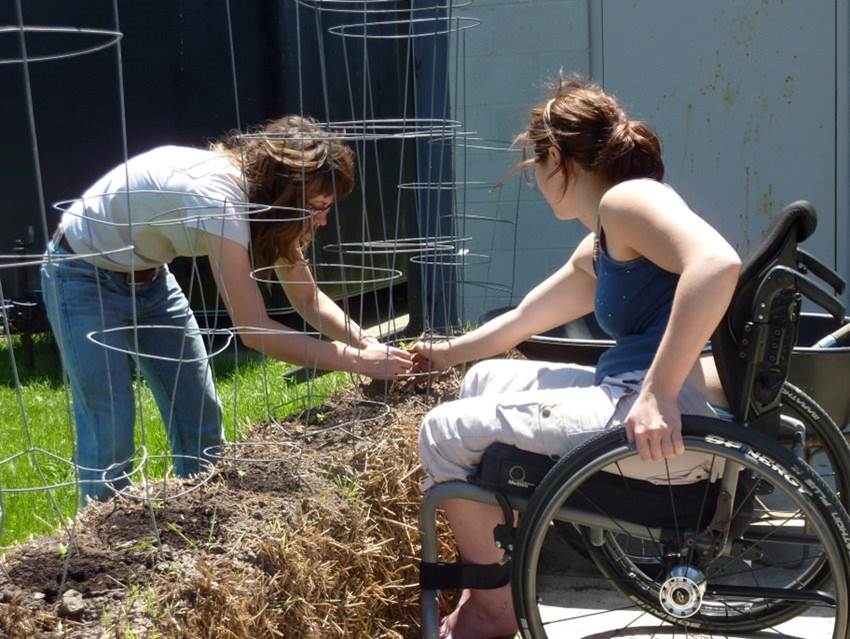
By Aimee Sterk, LMSW
I’m behind this year… way behind. With a new baby (5 months is still new right?) and going back to work after leave, I have been short on time for anything at all and have neglected my garden. My colleague Laura had a great blog about getting out and working in the yard, which is also a bit of a disaster at our house. I prefer gardening, so I will focus on just the garden. I usually put seeds in early May. Its early June—-but there is still time and a lot of AT that can help.
I plan what I grow based on what my family likes to eat, how much space I have, and potential cost savings. For example, we eat a lot of carrots and onions but I find them harder to grow and relatively cheap at the store, so I don’t grow them myself. I do grow herbs, kale, fancy greens/salad greens, and heirloom cherry tomatoes. This year I’m also growing sunflowers—more for the beauty and the birds than for cost savings.
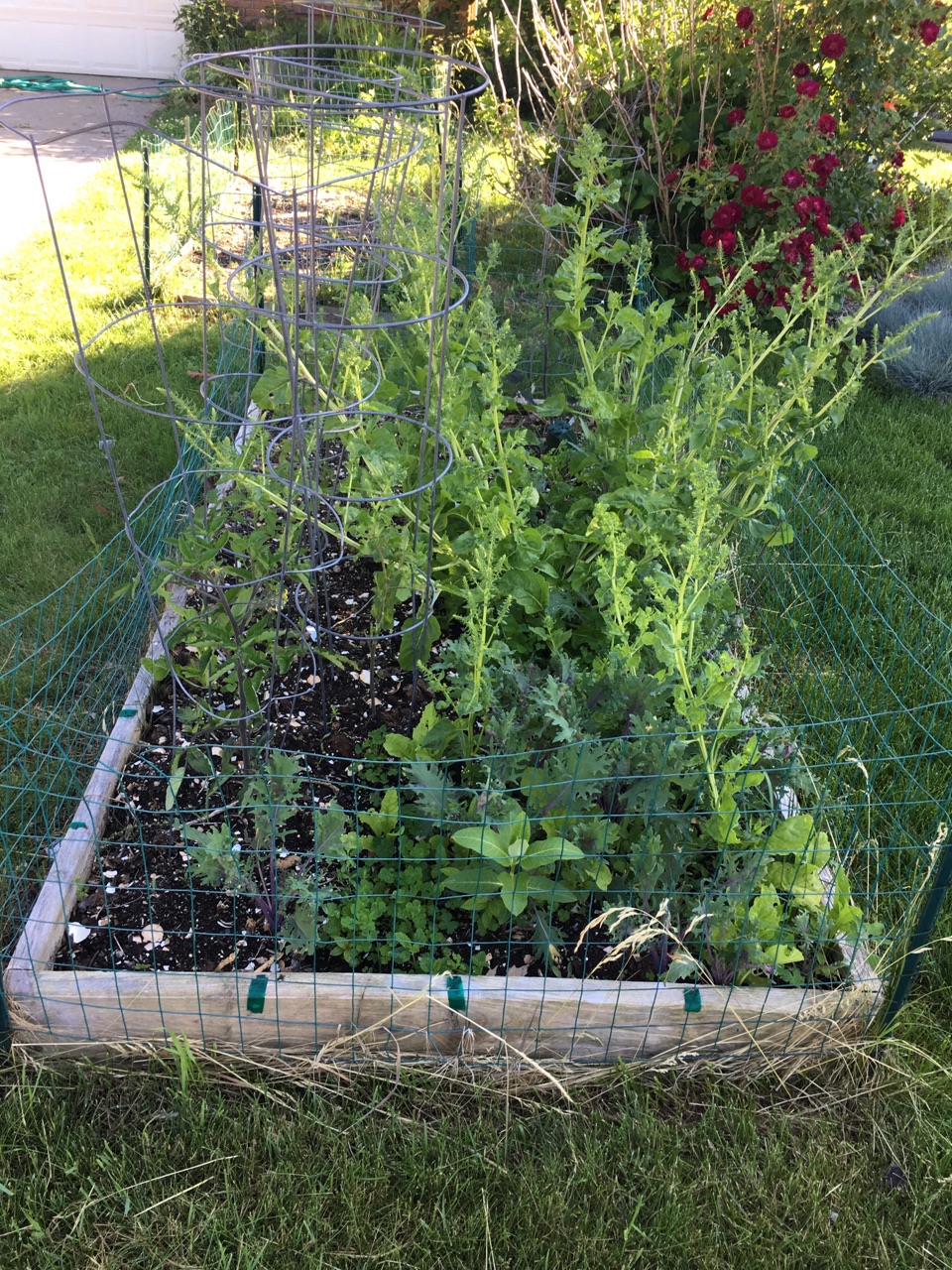
One of my raised beds with volunteer kale and chard and tomato seedlings planted this year. I make my own compost and as you can see, there are lots of egg shells in it this year. I heard the calcium is good for tomatoes.
I grow my plants in raised beds or containers right next to our driveway—seeing them when I come and go reminds me to water them. Raised beds and containers provide a variety of benefits:
- If your soil is poor, it provides a method for adding good soil
- It allows for people with physical disabilities to more easily access the beds—they can be raised to counter height if need be
- It allows for better drainage
My raised beds are not very raised and are starting to decompose so I think this is the last year for them. I have chronic upper back pain and, since giving birth, have also struggled with low back pain so new, higher raised beds are in the plans for next year.
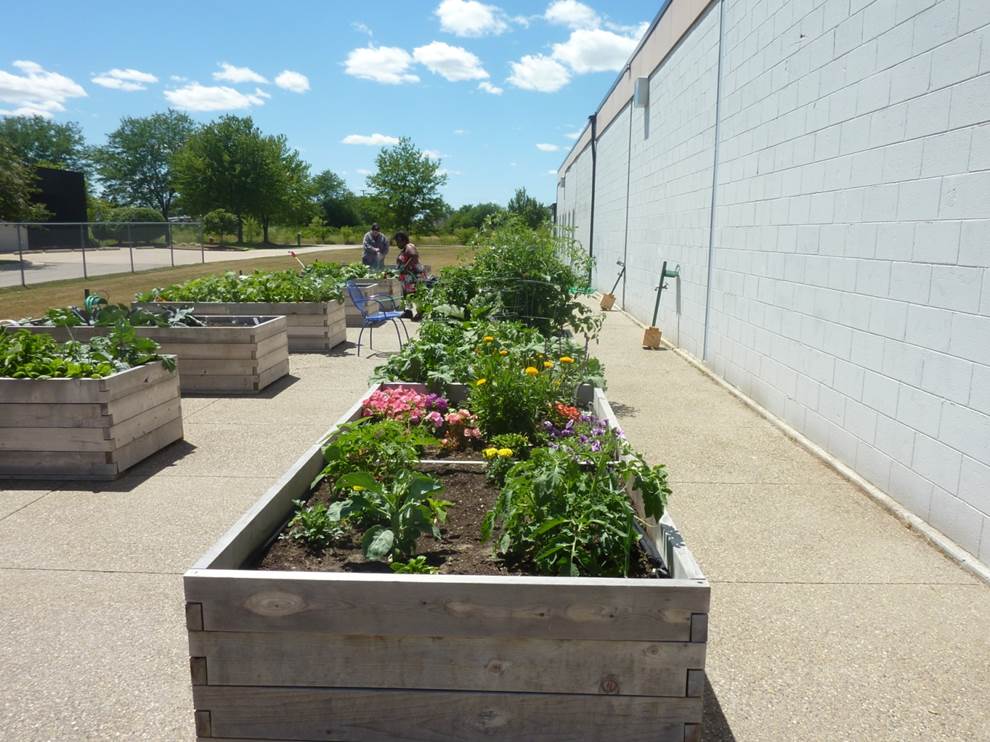
The Ann Arbor CIL hosted a community garden for years. Their raised beds are gorgeous–you can sit on the edges to work them or lean over just a bit. They are my nirvana raised beds.
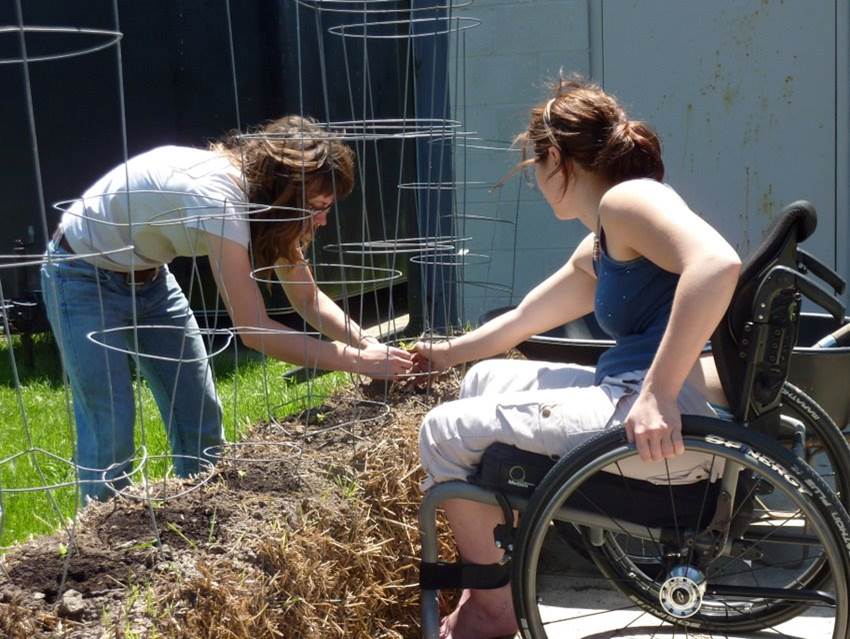
My cheapest option for higher raised beds next year are strawbale beds.

Ann Arbor CIL also had some tabletop raised beds that you can pull a wheelchair up to and under. Glen Ashlock,a former staffer and AT guru is pictured here with the bed.
Raised beds and container gardening don’t have to be costly either. A cheap, large pot or 5-gallon bucket on some pavers or bricks make wonderful, small raised beds that would be great for greens or potatoes or even small tomatoes. Straw bale gardens are cheap, easy ways to create a raised bed and use the decomposing straw to feed your plants. There is a great Facebook group called the Container Gardening Alliance that provides lots of tips and tricks for container gardening.
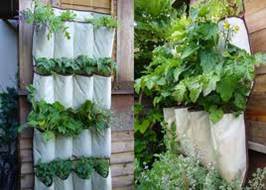
An ingenious example of an inexpensive, space-saving, accessible container garden.
Adapted garden tools and watering systems also increase access to gardening. Hand tools can be built up with bicycle grip tape or pipe insulation. Handles can be lengthened or shortened as needed to give people the reach they need. Drip systems or sprinklers attached to platforms with hoses run to them that do not obstruct pathways prevent the need for carrying heavy watering cans.

You don’t need a yard to have fresh herbs, flowers, and vegetables. A sunny window and some pots are all you need—and the plants will brighten your day and clean your air for you.
There are so many ways to make gardening accessible. What tips and tricks do you use? What are you growing this year?
Be sure to check out our accessible gardening webinar that covers all aspects of accessible gardening: tools, pathways, beds, and container gardening. Go green thumbs!

